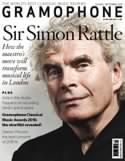Texte paru dans: / Appeared in: |
|
|
Outil de traduction (Très approximatif) |
|
|
Reviewer: Julie‑Anne Sadie
What a treat it is to hear forgotten chamber music by the English viol player Christopher Simpson, whose four-part Ayres were recently discovered in manuscript partbooks dating from the 1640s in the Bodleian Library. The Ayres comprise 20 ‘aires’ and dances (grouped in suites by key) for pairs of treble and bass viols, to which the Chelys Consort of Viols have added continuo instrumentation, as would have been appropriate. The Graces charmingly refer to the four sets of Divisions: two for two bass viols and two for treble and bass.
Chelys pace the Ayres beautifully
(the galliards are lilting, the aires tuneful) and ornament the repeats. The
viols tend to play as pairs (trebles and basses), though one bass often joins in
with the trebles in its tenor range. Absolute clarity is sometimes slightly
confounded by the choice of continuo instrument(s): the use of chamber organ
enhances blend and resonance but tends to obscure the bass parts whereas the
harpsichord and theorbo add welcome ictus, especially to the dance movements;
the Baroque guitar brings an exotic timbre to the A minor Divisions (tr 9) and D
major Sarabande (24), paired on each occasion with a different keyboard
instrument. Woven into the ‘Ayres & Graces’ are dialogues and antiphony,
countermelodies, cascading sequences, chromaticism and hemiolas, to which Chelys
and their colleagues Dan Tidhar and James Akers artfully draw our attention, at
the same time referencing the light and shade of Simpson’s personal motto,
‘Neque lux sine urba’. |
|
|
|
|
|
Cliquez l'un ou l'autre
bouton pour découvrir bien d'autres critiques de CD |
|

/7318599921532.jpg)


